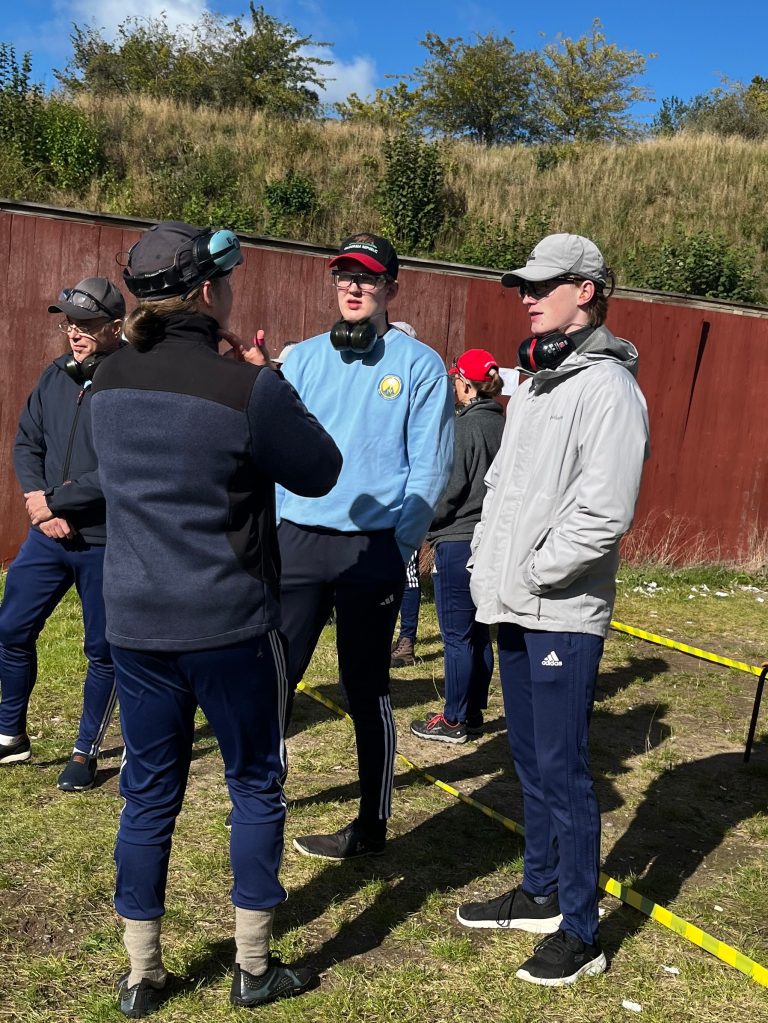
By William Rowe, SDKSkyt, Ballerup
After just under 50 hours on the range, I can now say that I have completed POMW III. It marks the end of a longer process, which for me could be said to have started back in 2019, when I was on the first two POMW courses. That's why it's great to finally have taken all three and build on the ranged shooting from POMW II. Because that is where POMW II and III differ. POMW II is designed to give you a calm and safe start on real firearms by training range shooting with 0.22 caliber, and POMW III builds on and pushes the limits, partly by shooting with coarse caliber and partly by shooting faster and possibly transition shooting against multiple targets.
For me, one of the coolest things about the POMW III, but also the most borderline, was shooting with 9mm. Since 2019 I have only shot with 0.22 caliber, a somewhat weaker gun, so finally being allowed to try shooting with coarse caliber has been really interesting. Already from loading the ammunition into the magazines, you get a clear impression that the weapon is designed to kill. For me, who has only handled small .22 bullets, the weight alone of a single 9mm cartridge was intimidating. So when we shot the 9mm at the end of POMW II to prepare for POMW III, I had a hard time controlling the gun and had no idea how I was going to be able to hit anything with it.
When we showed up the first day at POMW III, we were shooting exclusively .22, which I didn't expect. This, in turn, allowed me to get used to shooting with a shooting position, and my results from the day could be used as a baseline to work on raising. And I did, because over the next few times my result in the sitting rounds would calmly improve, and on the last day I would just shoot within the 1st division, which I was of course very happy about.
It was also a good motivator for my other shoots, knowing that I had the potential to shoot really well, but I never managed to shoot a result that I was completely happy with standing up. In that way, the sitting shooting may have had some negative effects on my attitude, as I started to set very high standards for all my shooting, despite the fact that, all things being equal, it is more difficult to shoot standing than sitting with support.
Where I saw the biggest improvements was with the 9mm. Of course, I wasn't the only one who was afraid of the recoil and the bang of the gun, so the way we practiced it was to fire off a whole lot of shots without worrying about points. Of course, we were still shooting at the targets, but getting the composure to befriend the gun without having to perform helped me a lot in getting used to having a little more power behind it. That way, you could also really focus on having a proper grip and proper shooting position, so that you could absorb the recoil correctly.
For all the mistakes you had brought from the 0.22 were really exposed with the 9. Because you can get away with a bit of everything with a 0.22, but with a 9mm you are punished for being sloppy. One of the clearest examples for me was when I fired the first shot with the 9mm and the gun just flew out of my left hand. It very effectively told me that there was something in my grip that needed correcting and then I had something more for my dry training. And the 9mm helped me a lot in that regard.
As a starting point, I find it difficult to get much out of my dry training, as it is not easy for me to find my own mistakes, but every time we have shot with 9mm, there has been a clear indication of a concrete mistake that I can work on and it has really helped me to be able to practice in a way that has brought improvement.
Because in the end, the most important thing in POMW is that you can improve, and that you have the attitude and humility to accept learning when you get it. That learning can come from the instructor, or it can be shown by the gun flying out of one's hands when fired. Either way, it's about listening and not making excuses. Then the next step is to do something about it, and my tendency has been that I very squarely practice the partial elements and finally try to assemble it into a whole. And sometimes it works.
Recently, practicing especially my draw on its own has given me a lot of success, but if I really want to get good, I have a feeling I'll have to stop practicing the parts and just practice the full process . Because although I was quite happy with my sitting shooting, I was unhappy with my standing, and I am because I think I can shoot much better. But if I'm going to shoot much better, I'm going to have to practice correctly, and that means practicing the whole rather than breaking it down into easy chunks.















